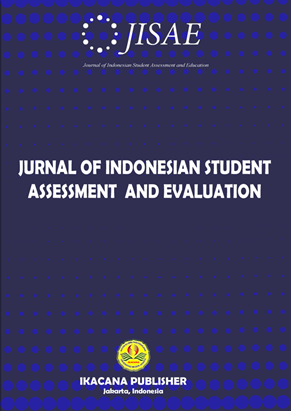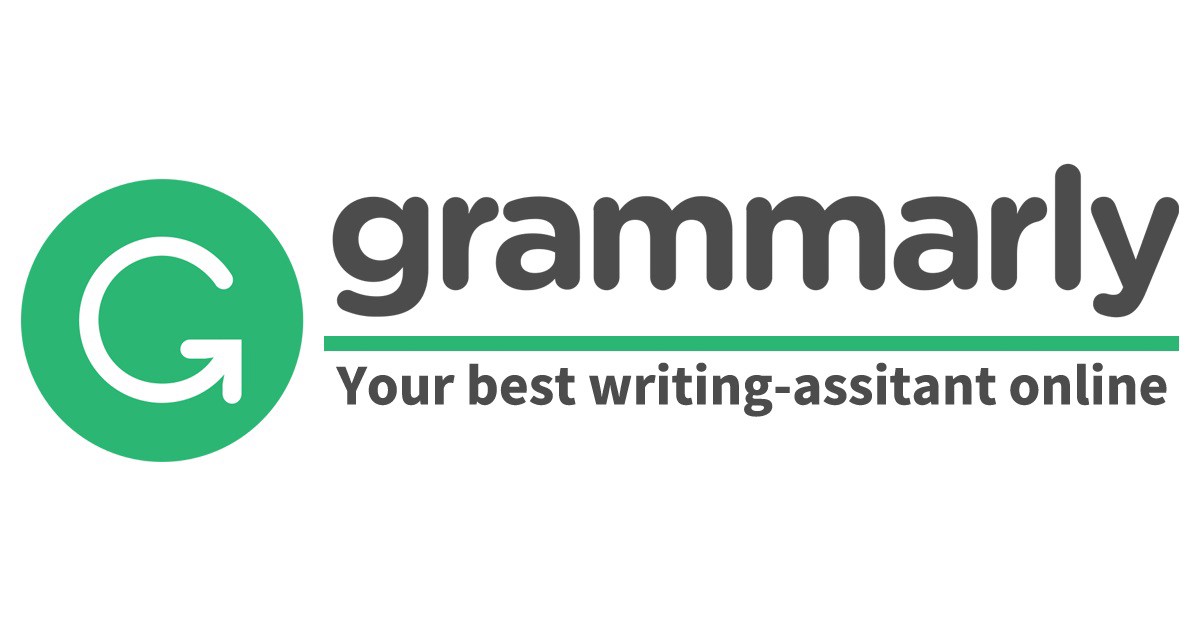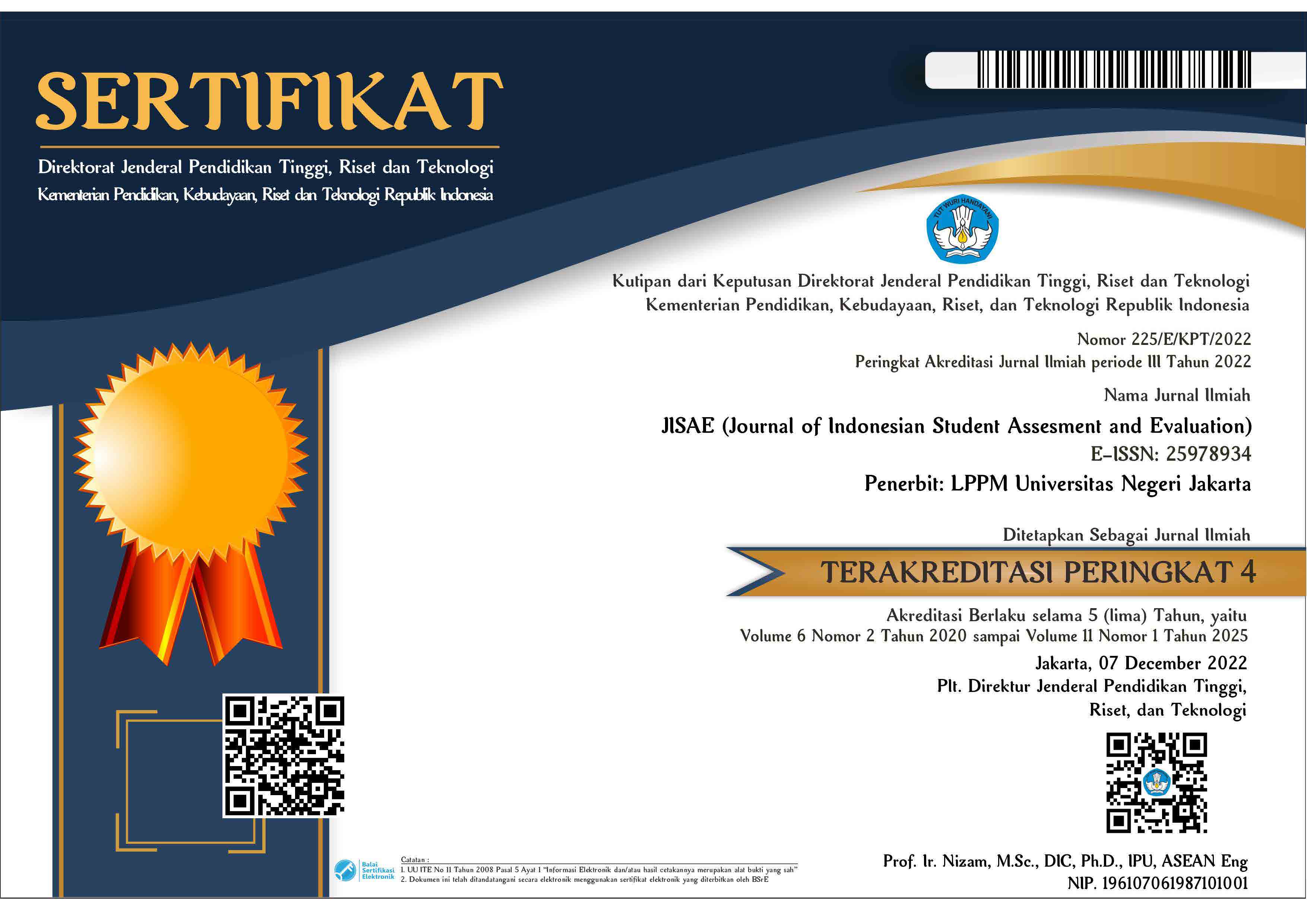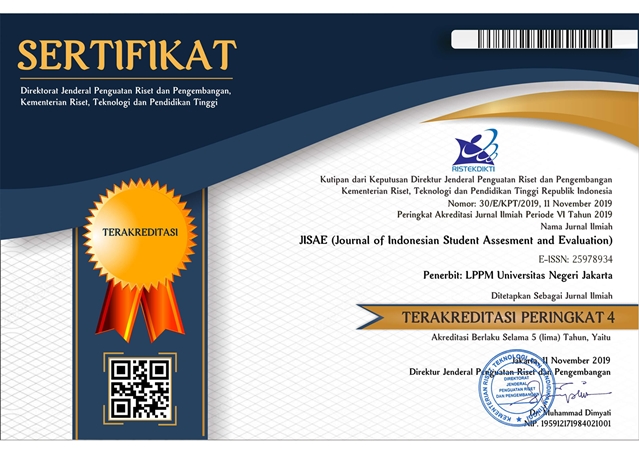ANALYSIS OF CLASICAL TEST THEORY (CTT) APPROCH ON ACADEMIC ABILITY TEST INSTRUMENT
DOI:
https://doi.org/10.21009/jisae.v5i2.12701Abstract
The purpose of this study to estimate the parameters in Clasical Test Theory (CTT) approach on Academic Ability Test Instrument new students of IAIN Syaikh Abdurrahman Siddik Bangka Belitung academic year 2018/2019. Data was collected through documentation techniques in the form of 425 sheets of student test answers. Based on the results of data analysis, it is known that the index of difficulty level in all problem fields has not shown a balance of comparison of easy, medium and difficult questions. The average questions are distributed in the medium category questions with a percentage of 25% easy questions, 51% medium questions, and 24% difficult questions. Distinguishing power index, in all question areas shows there are 37% of questions that are able to distinguish test takers 'abilities and as many as 18% questions are not able to distinguish test takers' abilities. While the effectiveness of distractors there are 239 or 79.6% functioning and there are 61 or 20.3% of the non-functioning distractors. The results of the validity analysis of 100 questions obtained 54% which have a coefficient of validity more than 1.59 and as many as 46% that have a coefficient value less than 1.59. For the overall reliability coefficient, a value of 0.81 is obtained. This means that 80% of the difference in scores obtained by test takers with others is their pure score difference or is not influenced by other factors as a source of error in the measurement.
Keywords: clasical theory test, test instruments.











